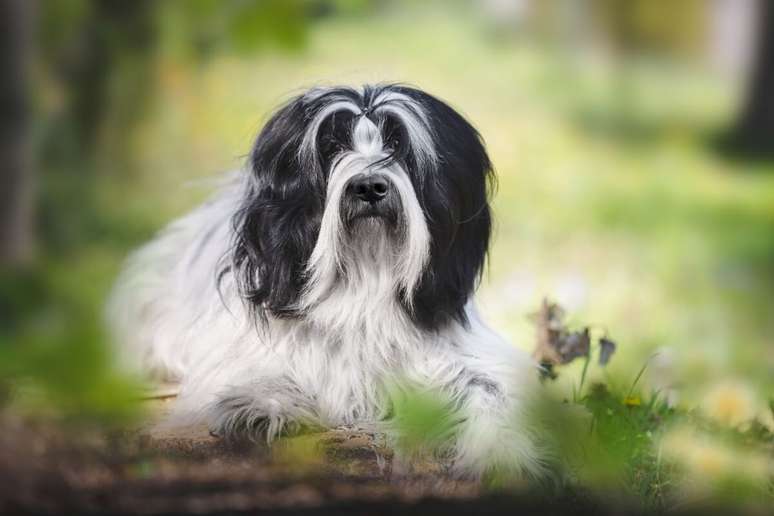Tibet’s millennial dog stands out for its elegant appearance, the balanced temperament and the strong bond with the tutors
Originally from the mountainous regions of Tibet, the Tibetan terrier is a race involved in history and spirituality. Despite the name, it does not belong to the Hunting Terrier group, but to that of the company’s dogs, as classified by the Brazilian confederation of cannophilia (CBKC). Traditionally, it was created by Buddhist monks and Tibetan merchants, being appreciated both for its loyalty and for their skills as a guard dog and herds on difficult soil.
According to CBKC, many believe that Tibetan terrier is the true “Holy Cane of Tibet”. It has been treated as a lucky symbol and has never been sold – presented only as a form of gratitude or as an amulet of spiritual protection. Over time, this breed has conquered the tutors in various parts of the world, in particular for its affectionate behavior, imposing aspect and adaptability to family life.
Here are the main features that make Terrier Tibeta a special dog!
1. Physical appearance
According to the official race model published by CBKC, Tibetan Terrier is a medium -sized dog. His body has an almost square shape, with the length of the shoulder at the base of the tail equal to height in the shred. Males measure between 36 and 41 cm, while females are slightly smaller.
THE coat It is one of its most surprising characteristics: long, abundant and double layer – being the external layer woolly and thinner and can be straight or slightly wavy. According to CBKC, the colors are quite varied, including white, gold, cream, gray, black, smoking, tricolor and particularos. The only unauthorized colors are chocolate, liver and merle.
The legs are large and round, with many fingers, which gives the dog a great traction – a useful feature to move safely in the mountain landscapes of Tibet. The tail is curved on the back and very well covered with hair.
2. Temperament and personality
According to CBKC, the Tibetan terrier is a company from the company par excellence: cheerful, extroverted and equipped with a kind temperament. He is known to be playful and very faithful to his family, with whom he establishes a strong connection. At the same time, it maintains a certain reserve with strangers: a function inherited from its guard function.
Although watchful and attentive, it is neither aggressive nor quarrel. Your balanced behavior makes you a good companion Familiesincluding those with children. CBKC also highlights its affectionate nature and its captivating way of acting, which delights tutors all over the world. Being intelligent and observing, learn the commands quickly and develops a strong awareness of the environment around you.

3. Care of health and food
Tibetan terrier is considered a healthy and resistant dog, but like every breed, it needs specific care. The long and dense cloak requires frequent brushing – preferably several times a week – to avoid and keep your hair shiny and free from dirt. Bathrooms and regular inspections are also indicated in the ears, eyes and legs.
In relation to foodIt is important to offer a balanced diet and suitable for its size and level of physical activity. Although active, Tibetan terrier is not usually hyperactive; Therefore, body weight control is essential. Periodic veterinary consultations help prevent diseases and keep the dog in good health.
4. Education and socialization
Thanks to its natural intelligence, the Tibetan terrier learns quickly, especially when training has been made with love and positive rewards. According to CBKC, the dog of this breed is naturally attentive and curious, which favors education since then cub. However, it can also demonstrate a little stubbornness: a common feature in ancient races with an instinct on guard and independence.
Early socialization is essential to become a balanced and safe adult. If exposed at the beginning of people, sounds and different environments, the dog learns to better manage external stimuli and unexpected situations. In addition, contact with other animals and different experiences help to avoid reactive or excessively protective behaviors.
Source: Terra
Ben Stock is a lifestyle journalist and author at Gossipify. He writes about topics such as health, wellness, travel, food and home decor. He provides practical advice and inspiration to improve well-being, keeps readers up to date with latest lifestyle news and trends, known for his engaging writing style, in-depth analysis and unique perspectives.





-1jecmk06d7aye.jpg)

